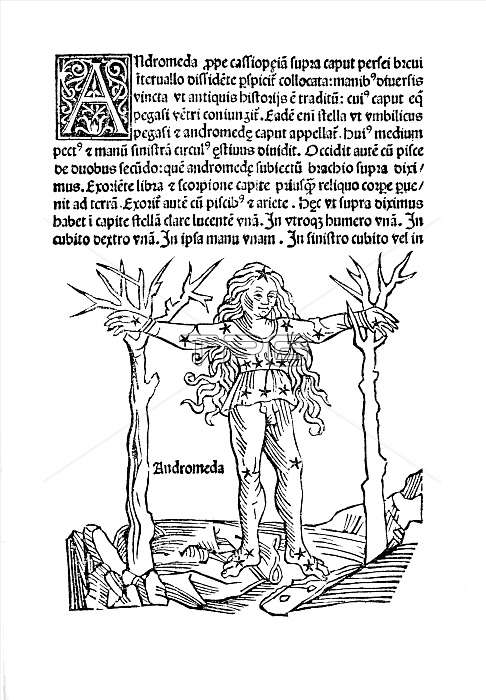
Andromeda was one of the 48 constellations listed by the 2nd century astronomer Ptolemy, and remains one of the 88 modern constellations defined by the International Astronomical Union. Located north of the celestial equator, it is named for Andromeda, daughter of Cassiopeia, in the Greek myth, who was chained to a rock to be eaten by the sea monster Cetus. Andromeda is most prominent during autumn evenings in the Northern Hemisphere, along with several other constellations named for characters in the Perseus myth. It is one of the largest constellations, with an area of 722 square degrees. Poeticon astronomicon is a star atlas whose authorship is disputed. The work was originally attributed to the Roman historian Gaius Julius Hyginus (64 BC - AD 17). The book lists most of the constellations in the same order as Ptolemy's Almagest (2nd century AD) which has led many to believe that a more recent Hyginus created the text. The Poeticon astronomicon was not formally published until 1482, by Erhard Ratdolt. He commissioned a series of woodcuts, but the relative positions of the stars bear little resemblance to the descriptions given by Hyginus in the text or the actual positions of the stars in the sky.
| px | px | dpi | = | cm | x | cm | = | MB |
Details
Creative#:
TOP22164199
Source:
達志影像
Authorization Type:
RM
Release Information:
須由TPG 完整授權
Model Release:
N/A
Property Release:
No
Right to Privacy:
No
Same folder images:

 Loading
Loading